If i were to go to ISEA this year (but i won’t have to as Sascha is going to cover the event for the blog!), the one installation i’d rush to see would be Shawn Bailey and Jennifer Willet’s Bioteknica Laboratory Remix with Teratological Prototypes, in collaboration with Oron Catts and Ionat Zurr of with Tissue Culture & Art Project.
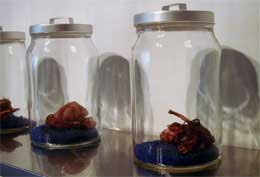
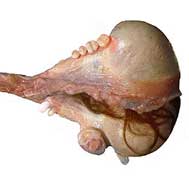
Bioteknica is a fictitious biotech corporation that projects its viewers into the future, where within a virtual laboratory designer organisms are generated on demand. The mock organisms produced are irrational and quite frightening. They are modelled on the Teratoma (comes from a Greek term meaning roughly “monster tumor”), a cancerous growth containing multiple tissues like hair, skin, teeth, and vascular systems. Monstrous as this may seem, teratomas are genetically identical to humans, making them key in cloning research. Several biotech companies have been working with teratomas for years, although public awareness of this is slight – for now.
Until 2003, Bioteknica was a purely multimedia production. During the summer of 2004, the artists further enhanced the slippage between fiction and reality by working with tissue culture protocols in the production of artwork as was pioneered by Tissue Culture & Art Project. With their assistance, Bailey and Willet practiced utilizing existing tissue culture technologies towards developing a series of “soft” sculptures. The organic sculptures were both fabricated from store-bought meats, and cultivated in the laboratory utilizing tissue-engineering technologies.
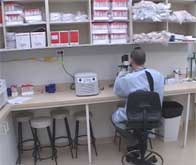
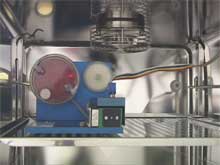
The Bioteknica Laboratory Remix is a complex functional laboratory installation – built to sustain cellular life within the gallery environment. Utilizing tissue culture and tissue engineering technologies, the artists have developed a series of small sculptures (Teratological Prototypes) that will be grown live in the gallery environment with an accompanying installation, laboratory protocol performances, and video. To prepare the installation living cells have been extracted from the body of Shawn Bailey. The biopsy of dermis contains fibroblasts, viable keratinocytes, etc. They are used as primary cell source to be grown and proliferate in-vitro. Cells are placed in bioreactors and given fresh nutrient serum to allow them to develop. The complete prototype will be exhibited from August 7 in San Diego.
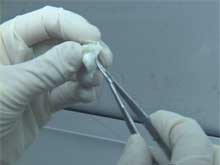
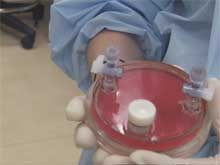 Bioteknica Laboratory Remix both embraces and critiques evolving biotechnologies, considering the contradictions and deep underlying complexities that these technologies offer the present and future of humanity.
Bioteknica Laboratory Remix both embraces and critiques evolving biotechnologies, considering the contradictions and deep underlying complexities that these technologies offer the present and future of humanity.
The 4 last pictures are video stills of Willet and Bailey preparing the Teratological Prototypes at SymbioticA. All images courtesy of Jennifer Willet.
I’ve always admired Bioteknica’s attempts to break down the barriers between scientific research and the public and their effort to raise awareness about the research done by biotechnology companies and about how fragile life is. Their work is deeply grounded in scientific research and although Bioteknica is a parody of a corporation of the future, the work is not such a far cry from what is going on in research labs today.
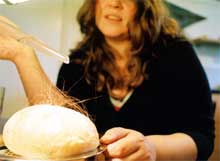
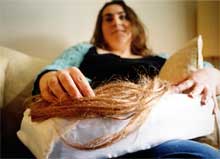
At Futuresonic, a couple of weeks ago, Anthony Dunne explained how the new department of Interaction Design he’s now heading at the RCA in London could play a similar role by shifting away from their usual task of solving problems and making products ready to market. His “Design For Debate” talk was about imagining fictional spaces that would be relevant to our everyday life. The scenarios created shouldn’t be shocking but slightly disturbing. He focuses on the role of designers to get the debate on biotechnology, and explained how designers can make tangible a technology that doesn’t really exist (yet) in our daily life. He illustrated the concept with projects such as Victimless Meat, by James King, Jon Ardern’s project (can’t remember the name of it) that would explore the untapped market potential of in-vitro culture adult toys, the Evidence Dolls he created together with Fiona Raby for an exhibition at the Centre Pompidou in Paris and a last project which have kind of hauted me ever since i heard about it: Michael Burton’s Memento Mori In Vitro is inspired by the Victorian fashion to keep hair of someone you love in a locket. Except that this time the hair of a deceased person would be kept alive. They would be fed at breakfast, washed regularly, you’d stroke them while watching TV, etc. Some might find it is spooky, others would say it’s quite romantic. So what if the idea of romance was transformed by technology?
Related: Future Worlds: Better by design?, Bioart – Taxonomy of an Etymological Monster, Extra Ear 1/4 Scale, Victimless leather jacket.
